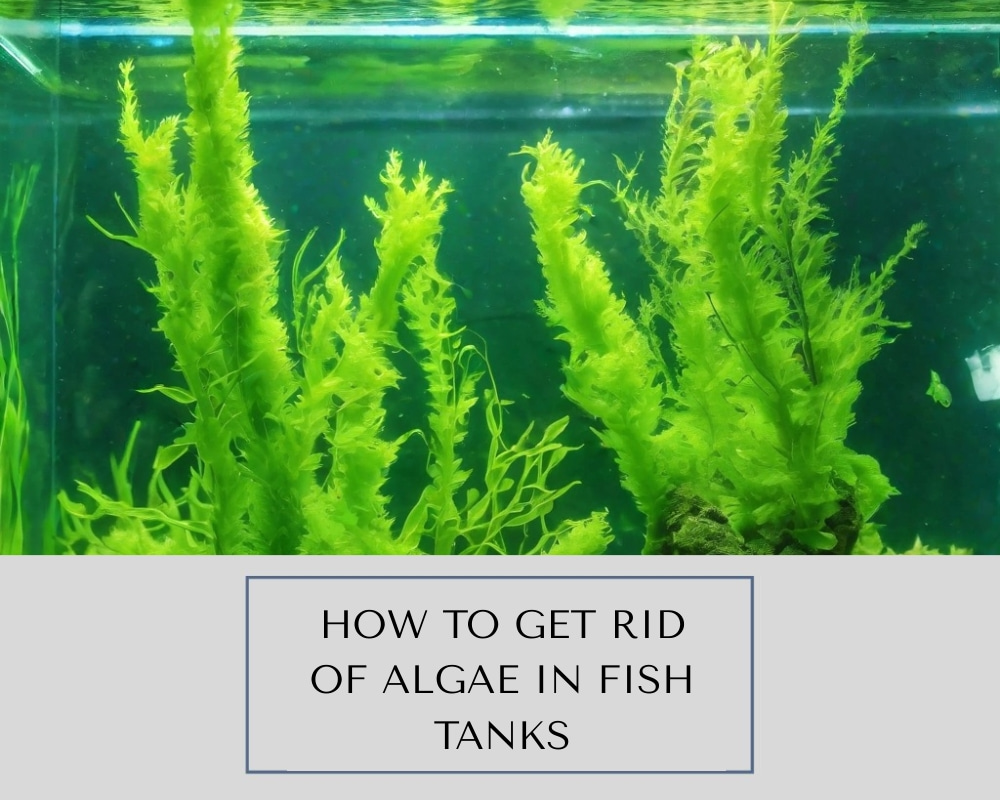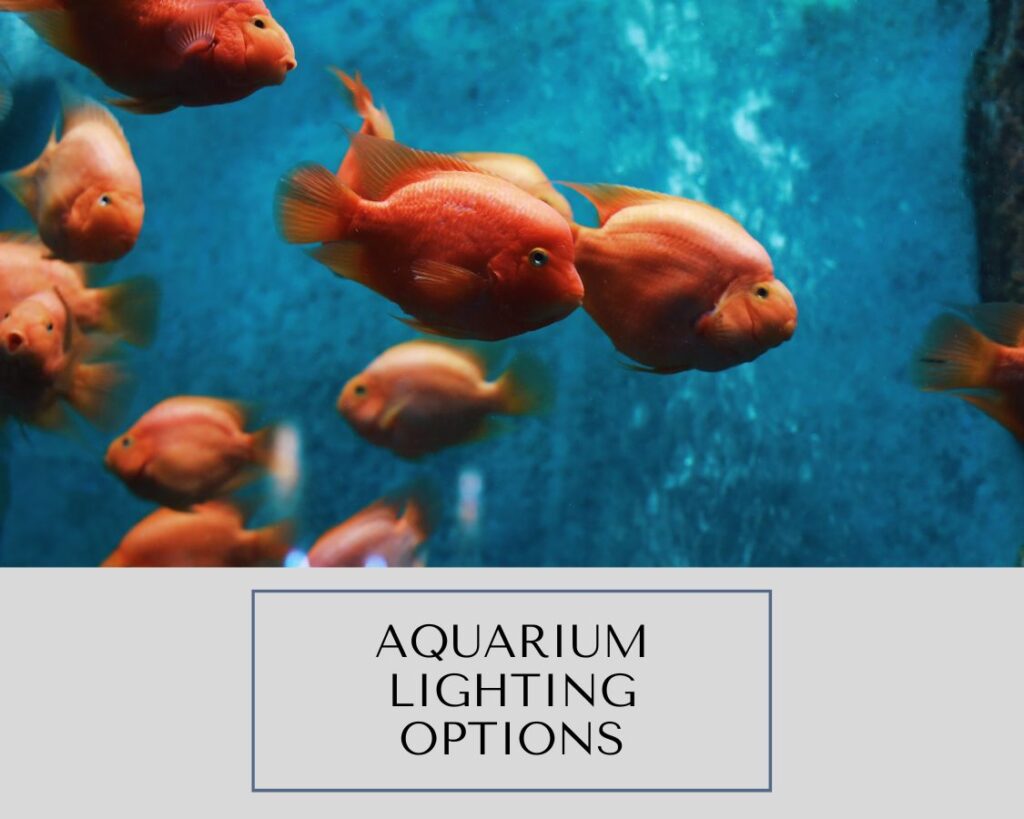It’s a scene every aquarist knows too well. You set up a beautiful fish tank, perfectly balanced with thriving fish and plants. However, as days pass, you begin to notice an unsightly layer covering your once-immaculate tank – a layer of green, brown, black, white, or even red gunk. This is algae, an almost inevitable issue for many fish tank owners. Keeping out this unwelcome guest may seem like a monumental task, but therein lies the challenge. In this in-depth guide, we’ll explore different aspects of algae and how you can maintain an algae-free aquarium in your home to create a healthier environment for your aquatic pets.
What is Algae?
Algae are a natural part of any aquatic ecosystem. They form a group of very diverse aquatic organisms that are capable of photosynthesis, which allows them to consume carbon dioxide and release oxygen into the water, like underwater plants. Despite their typically bad reputation, algae in small amounts can actually be beneficial for a fish tank as they contribute to the biological equilibrium.
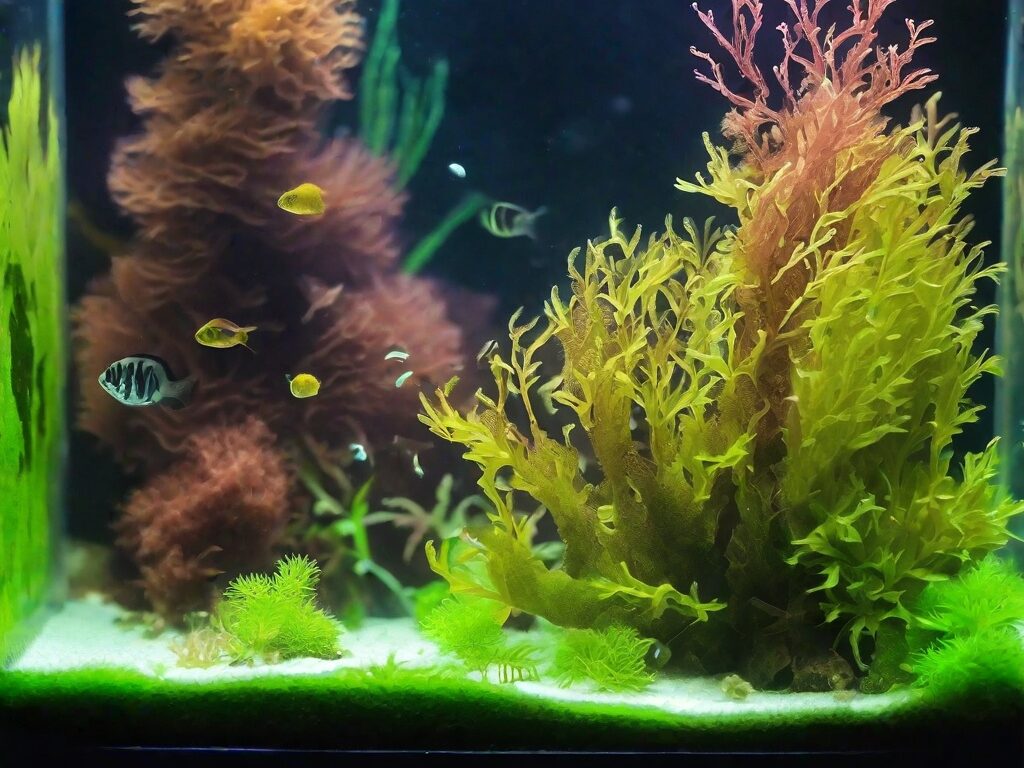
They act as a food source for some species of fish and invertebrates, help reduce nitrate levels in the water, and even make your fish tank look more natural. But in excess, algae can pose a problem. They can take over the tank, compete with plants, reduce the water quality, and could potentially lead to the death of the tank inhabitants if not managed. The types of algae are numerous, each resembling a bent-out-of-shape interloper.
Aquarium Algae Types
While algae come in various shapes, sizes, and colors, we’ll focus on the most common types that typically invade fish tanks: brown algae, black algae, green algae, white algae, and red algae.
➣ Brown Algae
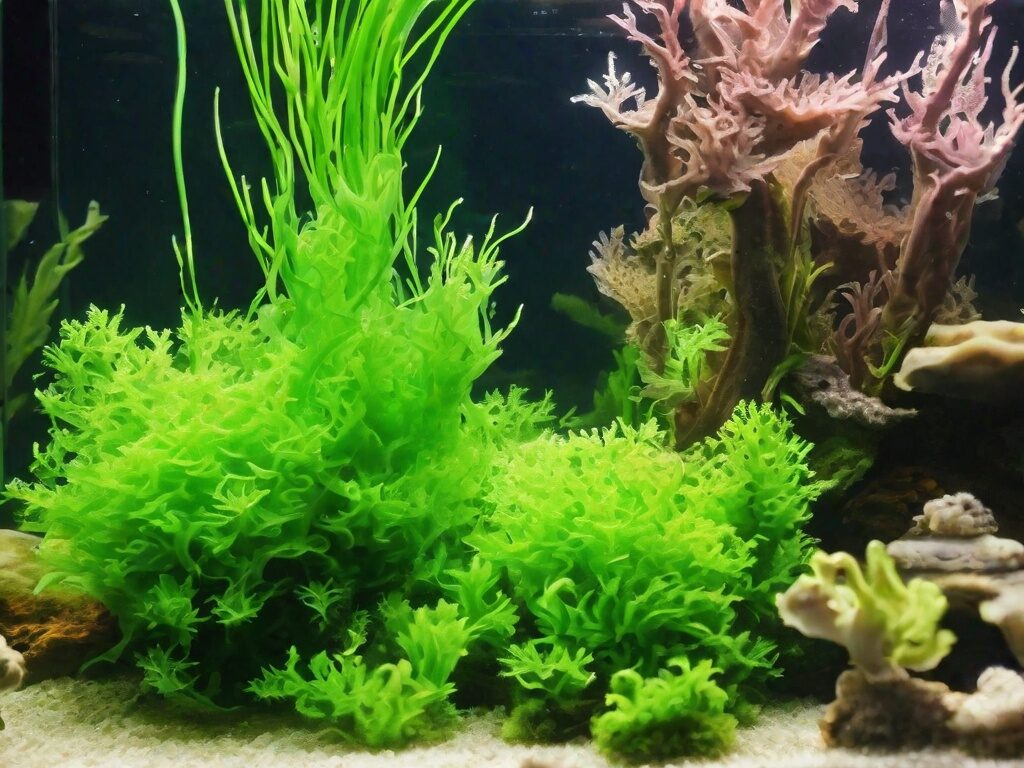
Brown algae, also known as diatoms, are usually the first uninvited guests showing up in a newly established fish tank. They are characteristic of a tank that is still finding its balance, mostly proliferating in tanks with high levels of silicate and low lighting conditions. They manifest as brown patches, forming a light dusting on your tank surfaces that can easily be wiped off. But, if left unattended, these simple algae can completely engulf your tank, hiding its real beauty beneath a murky layer.
➣ Black Algae
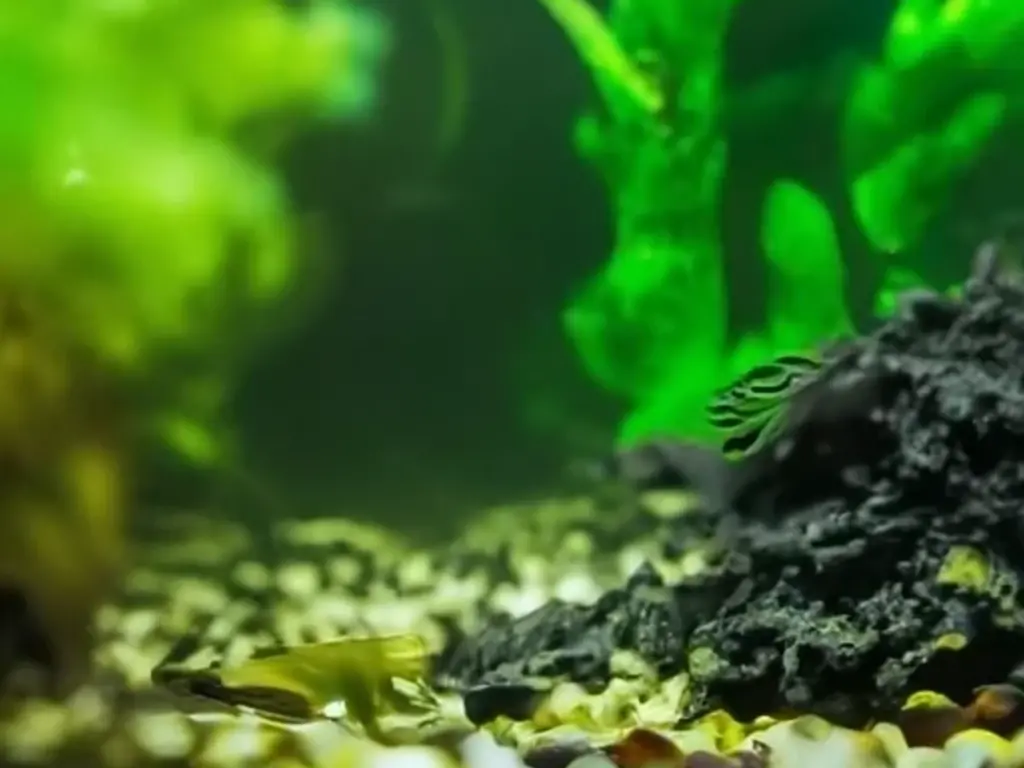
Moving on to a more determined and pernicious form, black algae, often identified by its black or deep blue spots, can be quite a pain to deal with. Its intense color may appear somewhat fascinating, but any seasoned aquarist knows the trouble that these tufts bring. Typically featuring a hair-like structure, these algae can firmly attach themselves to any surface and are anything but easy to detach. They thrive in high-nutrient environments and are definitive signs of a tank that’s suffered from neglect or inconsistent CO2 levels.
➣ Green Algae
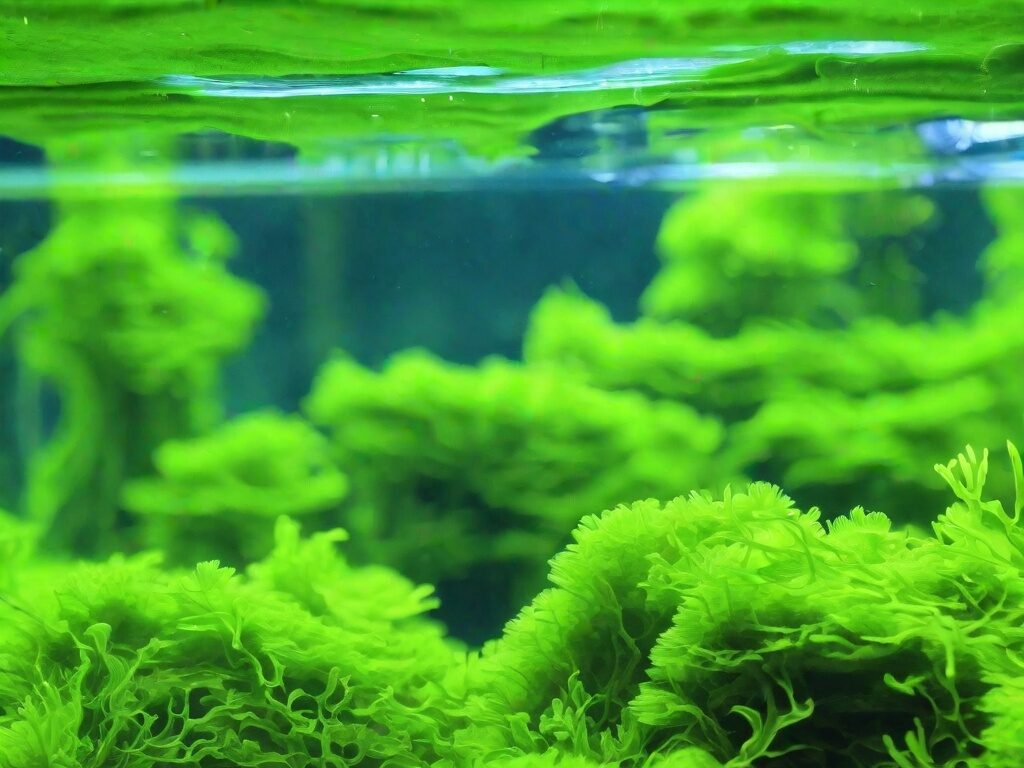
Probably the most familiar variety to fish tank enthusiasts is green algae. These organisms are notorious for their rapid growth and the greenish hue they cast on tank surfaces, turning your crystal-clear water into a cloudy spectacle. Some green algae can even float around in the water, causing the infamous ‘green water’ condition. Green algae are a result of too much light, nutrient imbalance, an overpopulation of fish, or sometimes, a combination of all the above.
➣ White Algae
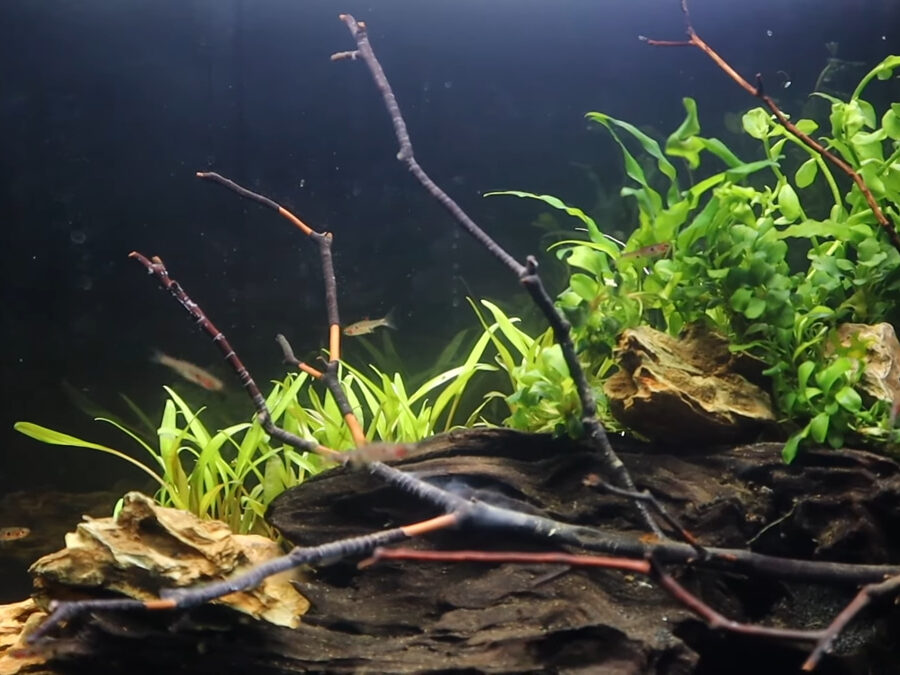
Less common but equally troublesome is white algae. Often appearing on new decorations or in tanks with poor water quality, this algae type forms a filamentous coat that can rapidly spread to cover plants, equipment, and substrates. The cloudy or milky formations can be mistaken for a bacterial bloom, making diagnosis a bit tricky.
➣ Red Algae
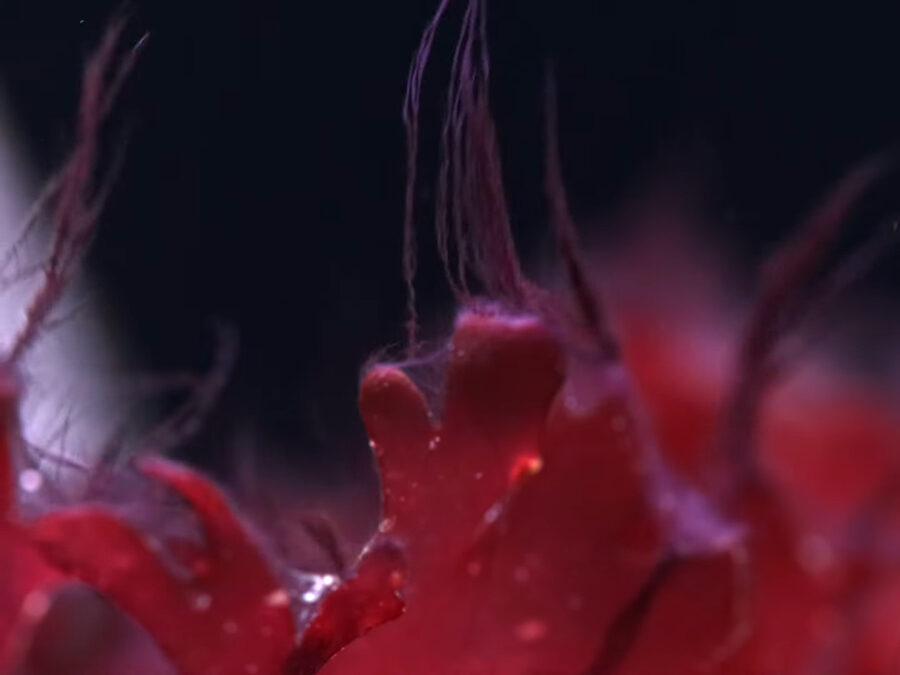
Last in the line-up of culprits is the red algae, an algae type that, despite its name, can show up as purple or even black. Its presence often adds an attractive touch to your fish tank, sometimes fooling hobbyists into believing they have a new plant. However, an overpopulation of red algae could imply severe fluctuations in tank parameters, specifically high phosphate levels.
The Algae Ecosystem
Through the lens of ecology, the relationship between algae, fish, and plants in a fish tank is truly fascinating. Just like in the wild, your fish tank carries its miniature ecosystem. The fish eat algae, the plants compete with them, and together, they form an interwoven survival saga within your tank’s glass walls. Consider the beauty of algae-eating fish, like the Otocinclus Catfish or the Bristlenose Pleco, merrily nibbling away at your tank’s algae. On the other side, we see the silent competition between plants and algae, a real ‘green war’ for supremacy in the tank. Here, algae can play the roles of both vexing villain and unwitting sidekick.
➣ Algae in Fish
Some fish species have diets heavily reliant on algae. Often referred to as ‘algae eaters,’ these fish perform a dual role – they add beauty to the aquarium while also serving as a natural form of algae control. These species, including the Otocinclus Catfish, Bristlenose Pleco, and Siamese Algae Eater, devour algae, helping to maintain an equilibrium. However, there’s a caveat: they can’t control a bloom once it starts. Should the algae growth surpass a certain level, these small cleaners may no longer be able to keep the proliferating algae populations in check.
➣ Algae in Plants
The role of algae in the life of an aquarium plant is quite an intriguing story. By nature, algae and plants compete for the same nutrients and will harm each other’s development if not balanced. Plants can be overrun with algae, causing them to falter and, in extreme cases, perish. However, specific plant species have a unique and beneficial relationship with algae. For instance, algae can help plants with nutrient absorption. Also, plants can starve off algae by utilizing excess nutrients, disrupting their explosive growth. It’s a delicate balance, a give-and-take relationship that keeps your tank’s ecosystem running smoothly.
Causes of Algae Overgrowth
Understanding the causes of an algae outbreak is a fundamental step in the fight against it. Overfeeding, excess nutrients, poor tank maintenance, excessive light, and irregular CO2 levels are among the primary culprits that may lead to ‘green water’ – a state of full-blown, unchecked algae growth in the fish tank. Like any other plant, algae feed off nutrients and light. Given excessive amounts of either, algae will flourish.
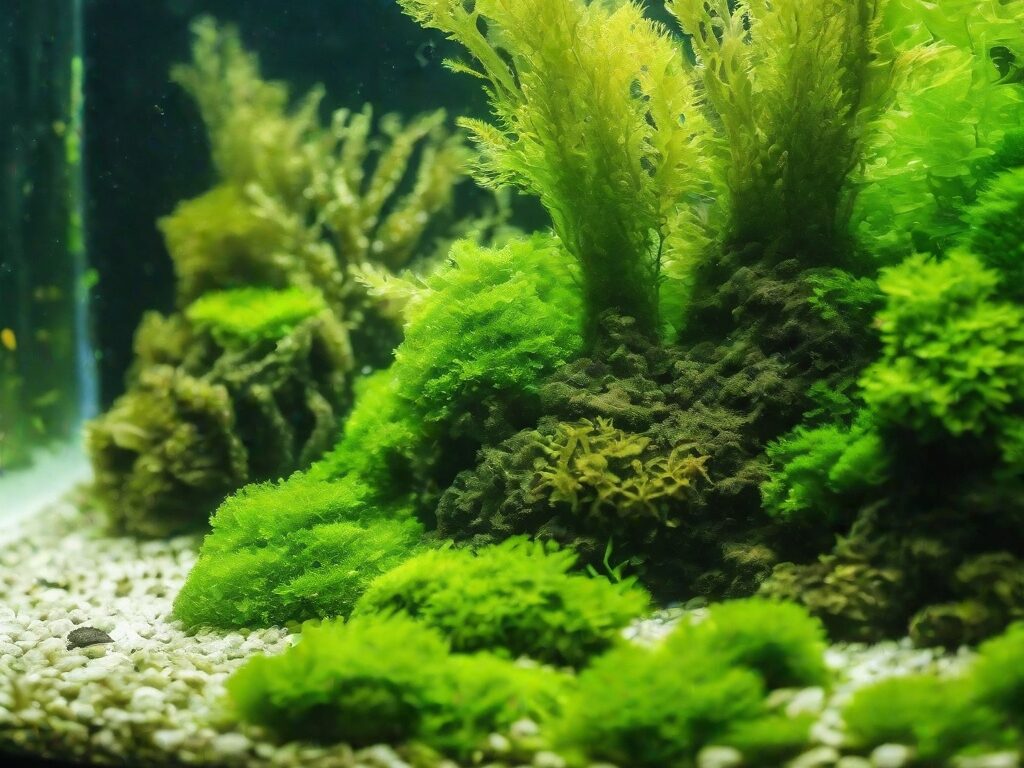
Overfeeding your fish results in food remnants, which decay and contribute to high nitrate and phosphate levels. Poor maintenance, like infrequent water changes or filter cleanups, also causes an abundance of organic waste to accumulate, encouraging algae growth. Furthermore, strong or prolonged exposure to light can trigger algae growth spurts, especially if paired with existing high nutrient levels. Conversely, inconsistent CO2 levels, whether too high or low, can both directly and indirectly promote algae growth.
Prevention and Control of Algae
Prevention proves the old adage “an ounce of prevention is worth a pound of cure,” as it’s much easier to prevent algae from overgrowing than to remove it once it’s taken over. Here are a few practices to incorporate:
Strive to maintain balance in your tank—balance in the number of fish and plants, in feeding, and in exposure to light. Overcrowding or overfeeding can increase the nutrient load, leading to blooms. Therefore, feed the fish with the amount they can finish in a few minutes and regularly clean the tank to prevent nutrient buildup.
Ensure your tank doesn’t receive too much light, as it can fast-track algae establishment. LED lighting systems with a timer can help you control the duration and intensity of light your tank gets. If your tank is near a window, consider moving it, as direct sunlight is a guaranteed coupon for an algae bloom.
Adding live plants can serve as the first line of defense against algae outbreaks. Apart from enhancing the aesthetic appeal of your aquarium, these plants compete with algae for the same resources, keeping them under control. Lastly, while there’s bound to be some algae in a healthy tank, it doesn’t hurt to introduce a few algae eaters to keep things in check.
Treatment Options for Different Algae Types
While maintaining a controlled environment is crucial, knowing how to react to an overgrowth of different algae types is equally important.
➣ Treatment for Brown Algae
The go-to method to manage brown algae is thorough cleaning. Since this brown layer can easily be wiped off, it’s ideal for quick removal. And remember the friendly algae eaters from earlier? Fish like Otocinclus and Bristlenose Plecos not only love these diatoms but also do a remarkable job at cleaning up. For a recurring issue, consider checking the silicate levels in your tank.
➣ Treatment for Black Algae
Black beard algae require more effort to eliminate. Reducing the light your tank receives and manually removing the affected areas is a good start. You might even have to remove and clean or replace infested objects. If the issue persists, consider introducing more CO2, as unstable or low CO2 levels tend to favor its growth.
➣ Treatment for Green Algae
When dealing with green algae, consider employing the three R’s: Reduce, Remove, and Regulate. Reduce the light exposure and nutrient supply, remove the algae manually or with algae eaters, and regulate the nitrate and phosphate levels through frequent water changes or through the use of phosphate absorbers. Also, upgrade or enhance your filtration system to ensure water circulation to all corners of the tank, preventing the stagnant areas from becoming algae hotspots.
➣ Treatment for White Algae
Addressing white algae begins with good tank hygiene. Any new additions to the tank – be it plants, fish, or decor, should be thoroughly cleaned to avoid introducing this hard-to-spot algae into your aquarium. Consistent water changes and maintaining solid water quality can also effectively keep white algae at bay.
➣ Treatment for Red Algae
Dealing with red algae calls for a duel in fine-tuning water conditions. Due to their affinity towards high phosphate levels, a good starting place would be striving to minimize phosphate amounts. This can be achieved by using RO (Reverse Osmosis) water, above-average filtration, and considering phosphate-absorbing materials in your filter. As these algae are harder to remove manually due to their firm anchorage, anti-algae treatments may be necessary.
Conclusion
In essence, achieving an algae-free fish tank means striving for balance – balance in lighting, feeding, and overall tank populace. On the one hand, you’d want to deprive the algae of their growth-promoting conditions, and on the other, create a healthy environment that encourages the well-being of your fish and plants. Indeed, managing a fish tank can be a daunting task, especially with algae posing as a persistent obstacle, but don’t let algae blooms get you down. With consistency and a little algae know-how, you can maintain a thriving and visually striking fish tank.

